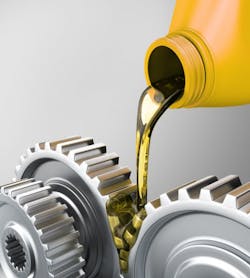The typical energy savings project focuses on either lighting or motors. And generally, the project is about the technology. For example, the lights get replaced with LED (often, but not always, the best choice). Or a few motors are replaced with energy-efficient ones.
These kinds of projects are usually good to do, if you can get the budget allocated for them. But there’s a good chance you may not get that budget allocated. The cost of large lighting projects or motor replacements can be enough to cause a proposal to be delayed or rejected.
What if you had a way of actually raising that money yourself? Or at least raising sufficient funds to offset enough of the project cost to get the bean counters to give you their approval? If you look closely, you may find the money is right there in front of you.
In the typical industrial plant, one type of equipment you see connected to a motor is the gearbox. A large plant may have hundreds of gearboxes. The lubricant in a gearbox should be gear oil, and gear oil has a distinct odor.
Typically, an industrial gearbox has a case plug on top (for adding oil). Remove it and see if you detect that distinct gear oil smell (it has a sulfurous tinge to it). If not, the mechanics probably need to service or replace that gearbox.
Now, use your infrared camera or spot temperature gun to measure the temperature through that opening. With good oil at the correct level, that temperature should be a few degrees above ambient.
Excess temperature in the gearbox means energy is being wasted, both in the box and in the motor that is driving the box. It also means that gearboxes are being wasted. That excess temperature could be because of mechanical wear, alignment issues, or other physical problems. But usually, it’s because of lubrication deficiencies.
At one manufacturing plant, a cost initiative resulted in automotive engine oil instead of gear oil being used in gearboxes. And instead of a synthetic oil, it was old-technology paraffin-based oil (this has a lot of internal friction in the lubricant). Use of the wrong oil combined with general inattention to checking lubrication levels meant the gearboxes ran much hotter than they should. The temperature issue was identified by an electrician who was a (rather thorough) thermographer.
After the mechanics flushed each gearbox and put in the correct amount of the correct oil, the delta between ambient and in the box decreased by 30°F to 45°F on each gearbox. Not surprisingly, motor winding temperature also decreased (the motors did not have to work as hard). Only three motors were used as benchmarks, but the decrease was about 25°F per motor.
If someone had taken the time to calculate how much electricity it took to heat the motors and gearboxes to that extent every minute of every day, the total would have been significant. But at this plant, nobody took the time to do that because this same electrician was working his way through a list of other energy waste issues to identify and resolve. Those included low power factor at the actual motor and voltage drop on feeders.





